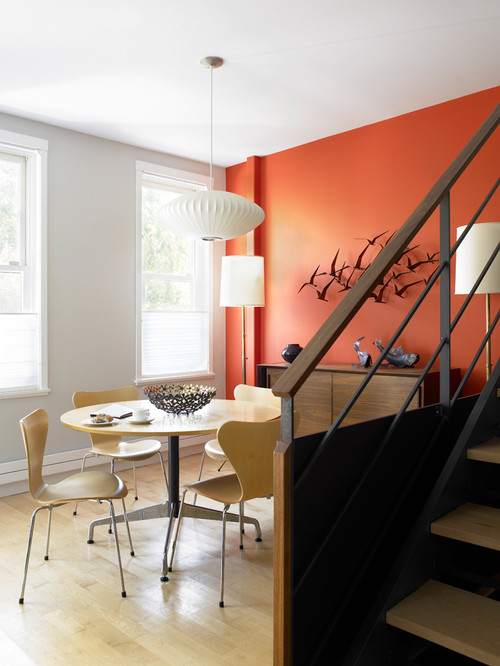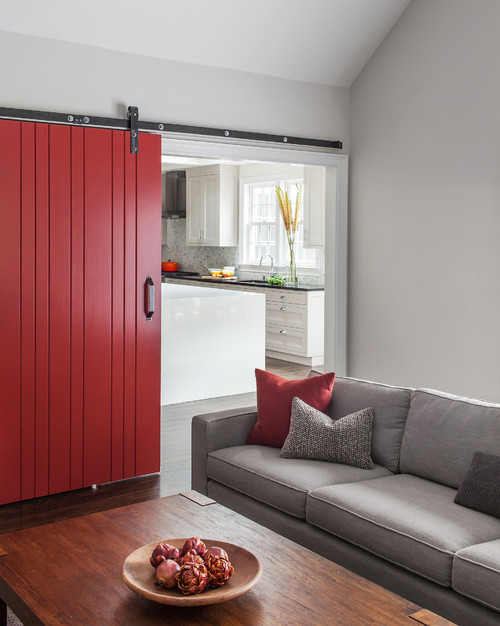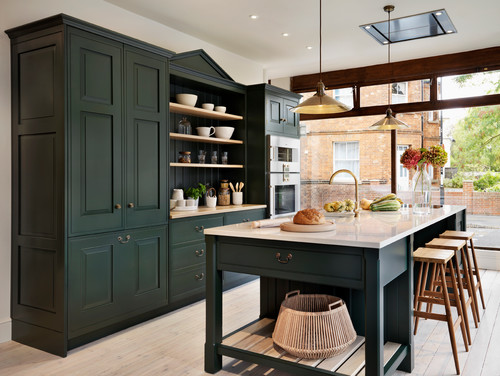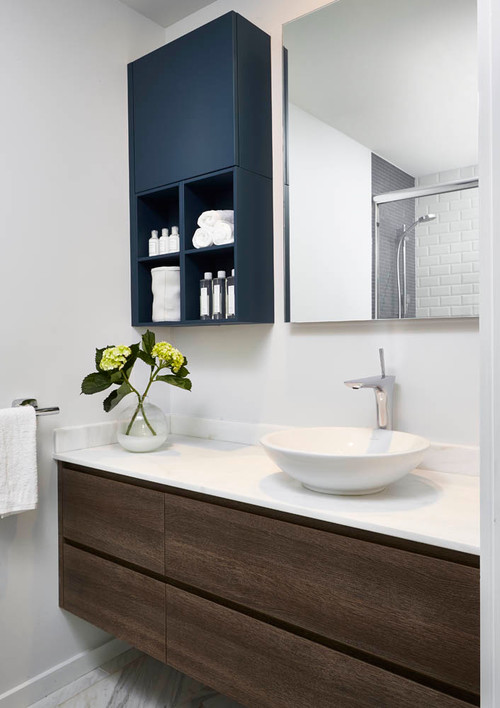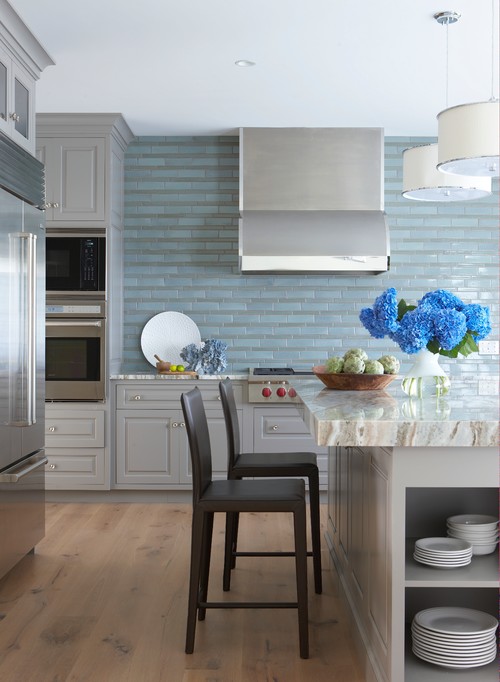Moved In? Now What? – A Post Move Check List


So, it’s been a month since you moved into your new home. The empty boxes are stacked in corners like miniature Leaning Towers of Pisas and you are missing some key pieces of mail. The moving checklist guided you day by day, but now that the moving storm has subsided, how do you complete the settling in process?
Ready for the best news ever!? Unlike your two-month long moving-in check list, there is a short list of tasks that will not only ensure you don’t miss the next People magazine, but will also help Mother Earth and others in need. Too good to be true? You can thank me later. Follow these five steps and you will forget you ever moved.
1. Boxes! Boxes!
To truly feel moved in, the first task is to get rid of all the empty moving boxes. So many of us are guilty of just leaving the empty boxes in the garage or attic to gather dust. Instead be green and save green by asking your moving company if they have a box return program. For instance, NorthStar Moving Company will give you back 25% of the original cost of their boxes if you return them.
Other ways to reuse boxes is to flatten them and put them out on recycling day or use them for storage of keepsakes, holiday décor and other items you only need on occasion. The most creative and inspirational way to reuse moving boxes is to join the Global Cardboard Challenge to celebrate child creativity!
2. Mail Yourself
Does your mailbox seem light? While you may be thankful to not be getting all of your bills you certainly don’t want to miss a due date. Check in with the post office to make sure they have your mail forwarding service set up correctly. Then send a friendly postcard to yourself, address it to you at your old address and wait and see if it gets forwarded to your new address.
3. Update Your Driver’s License & Consider Becoming a Donor
No one enjoys visiting the DMV and the good news is you don’t have to! You can change your address online. You must report your new address within 30 days of your move to the Department of Transportation Registry of Motor Vehicles.
This is also an opportunity to revisit being an organ donor. You can register to become an organ donor on your state’s DMV website as well. The number of donors willing to make organ donations are not growing as quickly as the number of people who need them. 20 people in the United States die each day while waiting for organ and tissue transplants. The number of patients in the U.S. waiting for transplants is currently over 116,000 people. Even more are waiting for much-needed tissue transplants.
While you are on the subject, consider a program to donate your whole body. The organ donor symbol on the back of a driver’s license is different from body donation, they are completely separate programs with entirely different consenting processes. Only 1% of organs donors specify to donate their whole body. There is a great need. You could potentially make a difference in the lives of many people.
4. Survey Your Stuff
After a month of living in your new home you now know what furniture, kitchen tools, artwork and even clothes fit into your new place. Rather than stumbling over the stuff that you don’t need, give it to someone that does need it and will give it a good home.
Create two labels: “donate” and “give to friends & family.” Donate clothing and household items that don’t have sentimental value to your local favorite charity such as Goodwill or Habitat for Humanity’s ReStore for someone else to enjoy.
For the items that are sentimental, keep them in the family by giving them to loved ones. But, don’t just hand it to them, throw a party, a reverse housewarming party! Instead of having your friends bring a housewarming gift, ask them to pick one (or more) of your items and take it home with them. This is a great way to reunite with old friends and meet new friends after your move. Your unneeded things will be in a home where you can visit them often.
5. Vote!
There is no “debate” that every American needs to cast their ballot, so it is vital to register to vote. Your voter registration does not move with you. If you move within your existing county, you must complete a new voter registration form to update your new address. If you move to a different county or state, you must re-register with your new county and/or state.
Visit the EAC website to download and print the National Mail Voter Registration Form. Once you have completed the registration form, mail it to the address listed under your state in the “State Instructions.”
See, in just five steps you are now clear of moving remnants and clutter, sipping coffee with your New York Times and are the shining example of being a responsible citizen. Enjoy your new life!
Moving with a Baby: The Complete Guide for Parents


We have organized the guide into three sections: Before the Move, Moving In and Baby Proofing.
By NorthStar Moving Co-Founder Laura McHolm
On the move with a little mover in tow? Every parent knows having a baby at home is an adventure. Take that everyday baby voyage and mix in moving your home, now your adventure is more like a hike up Mt. Everest! Here’s the good news, if you plan ahead and take simple steps that trek will become a walk in the park (well maybe not, but a manageable stroll up hill.) Before you pack up and gear up for the baby + move exploration, check out this complete guide for parents moving with a baby to ease the stress and enjoy the transition.
We have organized the guide into three sections: Before the Move, Moving In and Baby Proofing. You can think of it like pregnancy, nesting and then labor!
Before the Move
Stick to Routine: Baby’s love and need their routine. Don’t let the moving to-do list and packing get in the way of your regular daily routine. Instead of pulling an all-nighter to pack, try to pack over a long period of time. Use naptime and baby’s early bedtime to get packing done in bits. Baby & parents need their sleep!
Create a Moving Calendar: To keep your head from spinning, it is best to plan your move 8 weeks out. Here is a Moving Day Count Down Calendar to copy, print and hang it up where you can easily refer to it while feeding the little one. This way you can take it day-by-day and get the satisfaction of checking off moving to-dos!
Use Childcare: During the actual moving day, when boxes and furniture are being moved, little ones should be somewhere else. Ask a trusted babysitter, friend or family member to take your bundle of joy for the day. It is also ideal to use childcare for days leading up to your move so that you can get more done on your moving calendar. There are great nanny and babysitting services that help you find qualified childcare.
Talk To Your Current Pediatrician: Your pediatrician is a great resource. If you are traveling long distance, ask them for tips for keeping your baby happy on a plane or long car ride. If you need to find a new pediatrician, make sure you get a copy of all of your child’s medical records to give to your new pediatrician. Get copies of all your child’s prescriptions and have them called into a pharmacy near your new home. Ask your current pediatrician for recommendations on how to find a new pediatrician close to your new home. When finding a new doc, it is recommended to set up a meet and greet appointment as soon as you move.
Pack a Baby Bag: You know the daily drill; pack half the nursery to carry with you wherever you go. Well, this time the baby bag (box or small suitcase) should include all of your needs for three days (if you’re moving a long distance, you may want at least one month of supplies with you rather than on the moving truck). Once you move into your new place, you may not have easy access to diapers, baby food, pacifiers and the important squeaky toy. So be sure to pack everything you need for three days (or more) in one place that you keep by your side for easy access on moving day and the first few days after.
Moving In
Unpack the Nursery First: When moving in you should set up the nursery first. This will allow you to change your baby and easily put them to sleep on the first night in your new home. Arrange the nursery as closely as possible to your previous nursery. The familiarity will help you and your baby in the transition.
Setting Up The Crib: All new cribs on the market today meet the safety standards of the Consumer Product Safety Commission (CPSC) and the Juvenile Products Manufacturers Association (JPMA). When setting up a new crib or reassembling your crib look for the following suffocation and strangulation hazards:
- Sharp or jagged edges
- Missing, broken or loose parts
- Loose hardware
- Cut out designs in the headboard or footboard
- Crib slats more than 2 3/8 inches apart (width of a soda can)
- Corner post extension over 1/16 of an inch high
- Gaps larger than 2 fingers width between the sides of the crib and the mattress
- Drop side latches that could be easily released by your baby
Use Safe Bedding: Soft bedding can suffocate a baby, blocking the baby’s airway during sleep. Babies can suffocate when their faces become wedged against or buried in a mattress, pillow or other soft object. Use a safe crib with a firm, tight-fitting mattress covered with a crib sheet and nothing else in it. To keep your baby warm, use a sleep sack (wearable blanket).
Baby Proofing the New Home
I turned to the uber knowledgeable folks at Safe Kids Worldwide for a Baby Safety Checklist:
Crawl Through Your Home: The first step to a safe home, say the experts at Safe Kids, is to look at the world through your baby’s eyes. See what looks interesting and what can be reached. And I mean it literally – get down on your hands and knees in your new home and check for small things your baby can choke on. You will be amazed at what you discover! If you question if an item is a choking hazard, take an empty toilet paper roll and put the small object in it. If it fits completely into the roll, don’t let children under 3 play with it.
Test Alarms: Have working smoke alarms and carbon monoxide detectors inside all bedrooms, outside all sleeping areas and on every level of your new home. Test alarms monthly and change batteries once a year.
Install Gates: Install stair gates at the top and bottom of stairs. Stair gates at the top must be attached to the wall with hardware.
Secure Furniture: Secure furniture to the wall to avoid tip overs.
Check Windows: When decorating your new place, be sure to use cordless window coverings.
Mindful Unpacking: When unpacking, be sure to lock up medicines, vitamins, cleaning products, pet food, alcohol, poisonous plants, and chemicals (like paint, gasoline, etc.) and store them high out of your baby’s reach.
Your baby’s arrival was certainly the most blissful and incredible life change. Now you get to start the next chapter together in your new home. A home that is safe for your little one to play, grow and explore!
Laura McHolm is an organizational, moving & storage expert and co-founder of NorthStar Moving Company. NorthStar Moving Company is an award winning, “A+” rated company, which specializes in providing eco-luxury moving and storage services. www.northstarmoving.com
San Antonio Pet Adoption and Hurricane Harvey Relief


Coldwell Banker and Adopt-a-Pet.com renewed their partnership in 2017. Coldwell Banker D’Ann Harper, REALTORS® held a San Antonio pet adoption event and raised thousands of dollars for hurricane relief.
Coldwell Banker and Adopt-a-Pet.com teamed up again this year. The “Homes for Dogs” project launched in 2015 with a goal reaching 20,000 adoptions and Coldwell Banker affiliated offices nationwide joined forces and exceeded the goal.
At Coldwell Banker D’Ann Harper, REALTORS® we had planned a San Antonio pet adoption to join our Gen Blue family across the country by hosting a local pet adoption event. Our office locations span nine locations in seven cities in San Antonio and the surrounding areas. We had teamed up with local shelters, gathered resources, and promoted the National Adopt-a-Pet weekend.
What none of us could have planned for was the storm on the horizon. Hurricane Harvey made landfall on the evening of August 25 near Rockport, Texas. Home to many of our sales agents, family, friends, and sister brokerage the Ron Brown Company. The Category 4 hurricane sent wind gusts upwards of 100 mph through the Texas Coastal Bend. This area is composed of numerous small towns.
An Action Plan
We watched helplessly as the torrential rains moved along the 300 miles of Texas coastline to Houston and farther north to Beaumont. This is not only a Texas story; the storm moved painfully slow over the course of a week bringing the flood waters into parts of Louisiana, Arkansas, Kentucky, Mississippi, and Tennessee.
Without hesitation, Leesa Harper Rispoli rallied with the sales agents, employees, and partners here to formulate a plan of action. In step with our parent company, Realogy, who pledged to match up to $75,000 for Red Cross Hurricane Harvey relief funds, we launched a fundraiser directly benefiting the American Red Cross. To date this fundraiser has raised over $5,300.
Leesa put together a special message and effective immediately, on August 30, we began collecting donations. We then planned for a Big Donation Event on September 7, just ahead of our Adopt-A-Pet event on September 9. We communicated directly with our fellow Coldwell Banker family members who sustained severe damage. We continue to encourage and support their respective fundraisers found here:
HelpRockport.CBHarper.com
HelpPortA.CBHarper.com
Texans Rally Together
Even in the midst of a gas shortage caused by panic here in San Antonio, our Big Donation Event unfolded with grand success. Allen Pozzi and Richard Davies, in true Texas fashion, brought in their barbecue pit and served up brisket, sausage, and fajita tacos. Each taco sold for $2 with the proceeds earmarked for relief efforts. Over $1,387.44 was raised in monetary donations. Checks were delivered directly to the San Antonio Food Bank, a hub of distribution for those affected by Hurricane Harvey.

Hurricane Harvey Relief Donations
Physical donations came in by the truckload until our entire trailer was filled with new goods, including cleaning supplies, food, and hygiene products. Some of our donations were even sent via Amazon from other locations across the country, like ones we received from Heather Ostrom at Coldwell Banker Roseville and Rocklin. We worked with a church who organized and delivered all the items collected. They put them directly into the hands of those affected and set up a team of volunteers who are assisting in the rebuilding process.
Helping Furry Friends
With our donations delivered on Friday, we pushed forward together to promote our Adopt-a-Pet event. It was no longer about only the San Antonio pet adoption. It became about relieving the shelters who were feeling the pressure as they received incoming pets displaced by the flooding.

Cat Lodge & Leesa Harper Rispoli
Our very own Cat Lodge appeared on SALiving with TV personality Shelly Miles to voice how adopting a dog can make all the difference. Already full shelters here in San Antonio were seeing a large influx of animals that had escaped the storm or lost their families. Seeing a need, our friends at Adopt-a-Pet.com announced the release of a unique peer-to-peer platform that helps displaced people find local citizens who can provide temporary foster homes for pets until they can be welcomed back home.
On Saturday, September 9 our offices joined together with God’s Dogs, SARocks, San Antonio Pets Alive, and Pet’s Barn to take part in the nation-wide Adopt-a-Pet weekend. In total, 28 dogs found new homes, which for us is a tremendous success! Below are photos from our event and they speak louder than any words we can share.
At the end of the day, we’re all Texans. What does it mean? It means we’re family — here to lift one another up. We rise only by lifting others. So if that means raising money, donating goods, or hosting a pet adoption — count us in. If there is one thing we are passionate about here at Coldwell Banker D’Ann Harper, REALTORS®, it is changing lives by affecting real change where we can. Texas is a wonderful place to live and raise a family. If this tragedy has taught us anything, it is that we are Texas Strong. Stay on this journey with us as we continue down the path to recovery post-Hurricane Harvey . . . and Hurricane Irma. It is a long road home for some but we will reach the destination, together.



Wendy Holtorff and her family with their new pup! Congratulations!
Julie Brown and Donna Frye put in some serious “sign-holding” time — committed to pups and all things Adopt-a-Pet!
What You Need to Know About Solar Panels


Once you have decided to install solar panels, it’s important to research which solar panels are best for you, your home and your budget.
Guest post by Lauren White
The solar panel industry has developed exponentially, in the past decade. Much of that is owed to increased demand. According to the Department of Energy, Americans use 23 times more solar energy now than we did around ten years ago.
Homeowners have more solar energy options than ever before. In order to meet demand and outshine the competition, companies are putting their resources toward research and development. They are constantly working toward creating more efficient and innovative solar energy technology.
Once you have decided to install solar panels, it’s important to research which solar panels are best for you, your home and your budget. There are generally three solar panel choices for residential homes: Thin-Film, Polycrystalline and Monocrystalline. These three panels are part of solar photovoltaic (PV) systems, which means they convert the sun’s photons into electricity.
Thin-Film
Perfect for: The homeowner with a small budget, a low-to-average rate of energy consumption, and lots of area for installation.
The cells of thin-film panels are constructed by layering photovoltaic material on glass, metal or plastic. These layers can be measured in nanometers, significantly thinner than in traditional panels. Their thin construction makes them lightweight and flexible, and they have a low cost of production. As such, they come at a lower cost to consumers.
One drawback of this technology is its rate of degradation. These solar panels have an average life expectancy of 10-15 years, depending on the photovoltaic material used. Comparatively, monocrystalline solar panels have a life expectancy of 25-35 years.
Another drawback is their low efficiency rating of 7-15%. This rate doesn’t work well for homes consuming more than the national average of 11,000 kWh per year. Also, these panels must be installed over a significant amount of space, which can be a deterrent for homeowners with limited area for installation.
In recent years, technology has improved and certain thin-film technologies are pushing past 20% efficiency. With a higher efficiency rating, this technology can meet higher energy demands and become a greater competitor in the market.
Polycrystalline
Perfect for: The eco-conscious homeowner with wiggle room in their budget, an average rate of energy consumption, and perhaps a penchant for the color blue.
Polycrystalline panels are constructed by melting silicon into molds to create perfect square “wafers.’ These wafers of silicon are then installed on a grid to form the panel. The cost of making these panels is relatively low and the process produces minimal waste. This makes polycrystalline a more affordable option than the original solar panel, monocrystalline.
The efficiency rating for polycrystalline panels is typically 13-16%. They would perform best in homes with typical rates of consumption. You will still need a significant amount of installation space, for these panels, in order to achieve optimal benefits. You must also take into consideration whether or not your taste will agree with their blue tint.
Monocrystalline
Perfect for: The homeowner with less roof space for installation and/or a higher rate of energy consumption, who wants a longer-lasting product and can make a sizeable investment.
Monocrystalline panels were the first solar panels to be made available. Currently, they are some of the most expensive. Each panel is created using high-purity silicon cut into “wafers.” These silicon wafers are extremely efficient at converting photons into energy, with monocrystalline panels hovering around a 22% efficiency rating.
Since these panels can convert more energy per square foot, you won’t need as much space for installation. Greater energy conversion also means you’ll be able to power more appliances, like hot tubs, heated pools and electric cars.
Get What You Pay for—and Then Some
In most cases, homeowners surveyed by HomeAdvisor say the cost of installing solar panels is much less than their projected energy savings over a twenty year period. In fact, it’s been estimated that, in 2017, homeowners in Massachusetts and California will save double their investment in solar energy.
Calculate Your Estimated Savings
If you’re not sure of your ROI, Google has a convenient tool called Project Sunroof, which will calculate your estimated savings based on your specific home address. As for your installation cost, you can request local estimates through HomeAdvisor to get a realistic figure for budgeting.
While you’re doing your research, or when you are speaking with a professional, see what’s new and on the horizon in the industry. These technologies are developing so rapidly, there are breakthroughs on a yearly basis. In July of 2017, for example, scientists developed a solar cell with 44.5% efficiency. There is hope that this technology, and others like it, can be streamlined and integrated into the residential and commercial solar market.
Source: Coldwell Banker Blue Matter Blog
Not Getting the Media Coverage You Want? 3 Tips on Getting Free Publicity in the News


If you were at a cocktail party, standing with a group of people, what is the one thing about your company that is going to make everyone want to know more?
<– Go back to the Real Advantages home page
Public relations was a hot topic at the recent Inman Connect San Francisco. And it’s no surprise why: PR can be a powerful promotional tool for a business to gain free exposure in their local news. Yet often real estate companies are not using PR in their marketing mix, give up after a few unsuccessful attempts of not getting coverage or confusing PR with advertising.
PR is earned media – not paid media. The core difference is that advertising is pay for play, where you are in control. If you can afford to pay for the placement of an advertisement, you control the message, you control when its distributed, and you control how long it’s out in the marketplace. In PR, the control is in the hands of the media. The reporter and media outlet control if and when it will run, how that story will be written or edited, and who else will participate in it. In PR you have to “earn” your way in by “pitching” media on an idea and convincing them why a particular story is worthy of coverage and why you should be interviewed for that story.
Coldwell Banker can help you navigate through the complexities of PR. Here are 3 tricks of the trade for generating media exposure in real estate:
IT’S A 24/7 NEWS WORLD. Take advantage of this by using your MLS data and packaging it up with the monthly National Association of Realtors (NAR) Existing Home Sales report. Around the third week of each month, NAR issues national real estate data. Not only is this information of national interest, but you also can give it local appeal by adding those same data points from your MLS – things like average home price, inventory levels and time on market. When you compare the national numbers to the local numbers, ask yourself: Is your average sales price up or down compared to the nation? Are your days on market longer or shorter? These comparisons are a great way to “localize” the story. There isn’t an easier way to position yourself and your company as the premier source of local real estate information to the media and its readers/viewers.
BREAK THROUGH THE NOISE. Reporters are inundated with story ideas, so make sure your pitch or press release stands out. For example, if you’re opening a new office somewhere in town, don’t write the traditional press release announcing the opening of this office. Why not paint a bigger picture? What’s happening in that area of town? Has there been recent construction for new commercial development? New home developments? Interstate/highway expansion? Population growth in this area? You will have to do a little research, but packaging up your new office opening with a larger story of city/neighborhood growth could increase your chances of actually getting coverage. Yes, the story won’t be exclusively about your new office (let’s be honest that story was never going to run anyway), but now you might get included in the larger story as a source and potentially getting your company mentioned as a part of that growth story.
TELL THE RIGHT STORY OF A HOME. Coldwell Banker Global Luxury represents some of the world’s most stunning homes that generate national media coverage. The key to getting the media’s attention when it comes to covering a luxury or notable listing is getting outside the listing description model for a press release. Is the owner someone notable? Use the first 50 words to tell that story. If the owner isn’t going to generate headlines, then use that headline and opening paragraph to tell the story of the uniqueness of the property. Does it have smart home or green features? Can you look out a window to see something no one else in town gets to see? Is there some historic element to the house waiting to be shared? Bottom line: If you were at a cocktail party and standing with a group of people, what is the one thing about this house that is going to make everyone want to know more? Use that element as your pitch to the media.
Looking for more tips on how to get the most of your real estate PR, visit CB Exchange and search “public relations.”
Source: Coldwell Banker Blue Matter Blog

 Facebook
Facebook
 X
X
 Pinterest
Pinterest
 Copy Link
Copy Link


